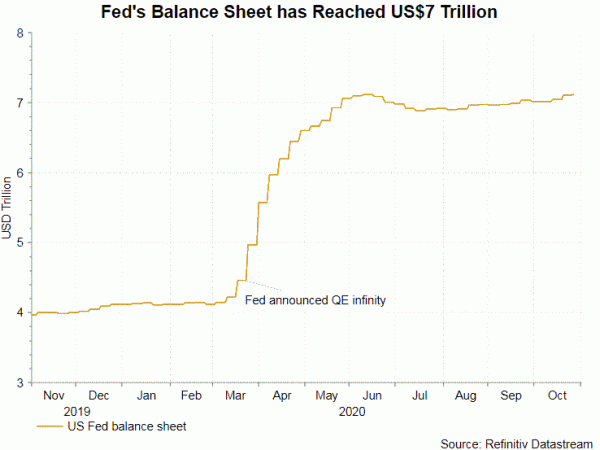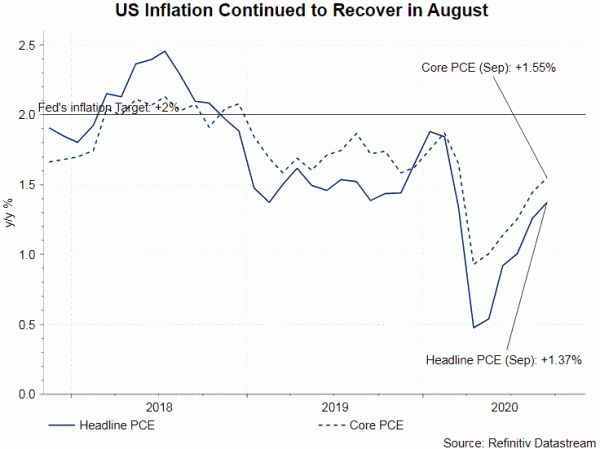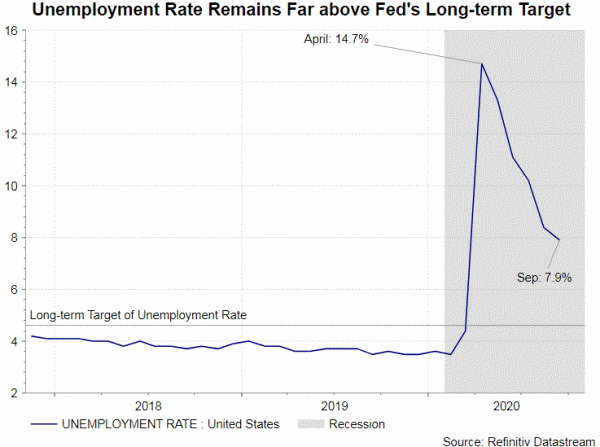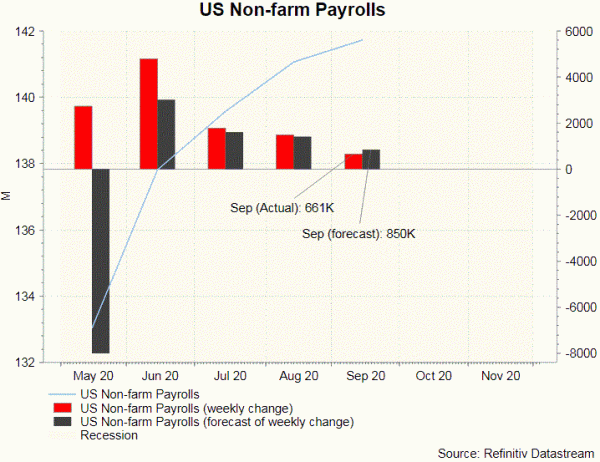We do not expect any change in the monetary policy at the November meeting. That is, the Fed should leave the policy rate unchanged at 0-0.25% and the asset purchases program unchanged at US$120B/month. The central bank will maintain a dovish stance, warning that risks to growth are skewed to the downside and uncertainty remains high due to resurgence of coronavirus cases. By the time the FOMC takes place, the result of the US presidential election should have not been finalized. The Fed will continue to call for more fiscal stimulus for supporting economic recovery. New insight from the meeting could be policymakers’ discussion about how to support its forward guidance on policy rates by providing more clarity about the role of asset purchases. Yet, a change in the forward guidance is still premature at the upcoming meeting.
Economic Developments
Since the September meeting, economic data have suggested that a recovery is underway. Initial estimate showed that GDP expanded +33.1% q/q (annualized) in 3Q20, beating consensus of +31%. The economy contracted -31.4% in the second quarter. Consumer spending soared +40.7% in 3Q20, following a -33.2% declined in the quarter ago. Core PCE inflation eased to +1.5% y/y in September, from +1.6% a month ago. This also came in worse than consensus of +1.7%.
ISM manufacturing index is the first data point for October. The reading increased +3.9 pp to 59.3, the strong since September 2018. This also suggests that the sector has expanded for 6 consecutive months. Improvement was broadly based. For instance, new orders soared +7.7 pp to 67.9, while employment also added +3.6 pp to 53.2. The latest employment report will be released this Friday. The market forecasts nonfarm payrolls increased +600K in October, following a +661K addition a month ago. The unemployment rate probably slipped -0.2 pp to 7.7%. Average earning probably grew +4.6% y/y, easing slightly from +4.7% in September. However, the unemployment rate remains far above pre-pandemic level and Fed’s long-term target of about 4.5%.
Monetary Policy
On the monetary policy, the Fed will leave all its measures unchanged. In September, the Fed adjusted the language in the policy statement to reflect the shift to average inflation targeting. We believe this will remain intact in November. As such, the Fed will reiterate the stance that “the Committee seeks to achieve maximum employment and inflation at the rate of 2% over the longer run. With inflation running persistently below this longer run goal, the Committee will aim to achieve inflation moderately above 2% for some time so that inflation averages 2% over time and longer-term inflation expectations remain well anchored at 2%”. The central bank will also reiterated the stance to “maintain an accommodative stance of monetary policy until these outcomes are achieved”. On the forward guidance, the central bank “decided to keep the target range for the federal funds rate at 0 to 1/4% and expects it will be appropriate to maintain this target range until labor market conditions have reached levels consistent with the Committee’s assessments of maximum employment and inflation has risen to 2% and is on track to moderately exceed 2% for some time. This marks a significant change from previous meetings which emphasized the “maximum employment objective and its symmetric 2% inflation objective”.
We expect some discussions about asset purchases. As Fed Governor Lael Brainard noted o October 21, “we will have the opportunity to deliberate and to clarify how the asset purchase program could best work in combination with forward guidance to support achievement of maximum employment and 2% average inflation”. It is likely that the members would discuss this month bout how to support its forward guidance on policy rates by providing more clarity about the role of asset purchases.
















